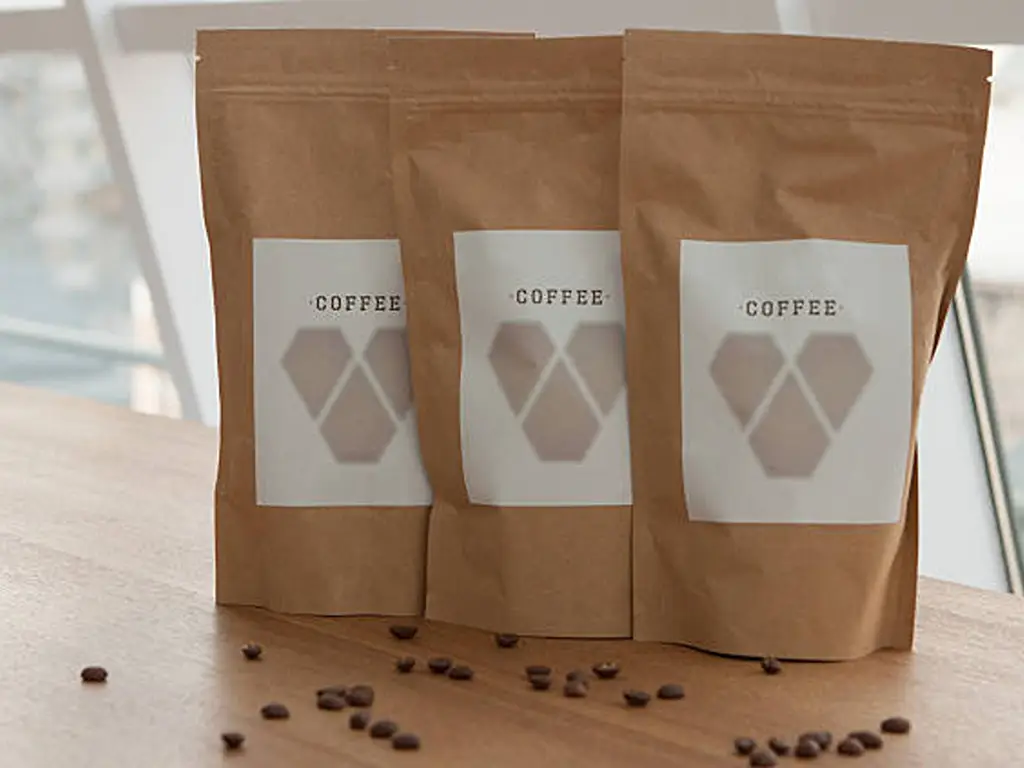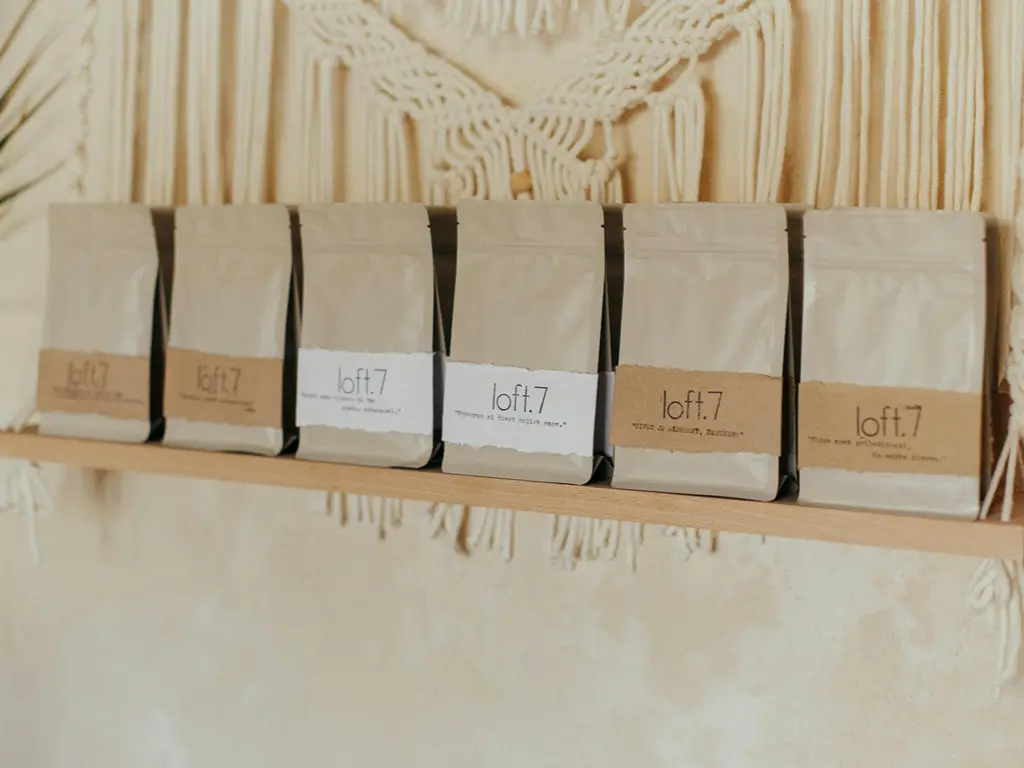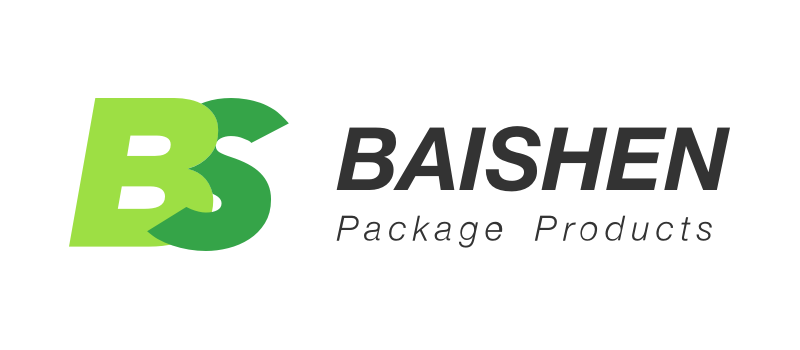Understanding Coffee Bag Materials
In 2025, it is more crucial than ever to know what coffee bags are made of, both to the brands and consumers. Coffee bag material is not a simple container, but a complex barrier that is supposed to preserve coffee freshness, flavor, and aroma and meet the environmental principles of the brand. The material is very important in the storage of whole beans or ground coffee, as it helps to prolong the shelf life and keep the product quality.
Over the past few years, the significance of coffee bag material has changed drastically as consumers have become more aware of the issue of sustainability and the pressure on brands to be more environmentally friendly. Since coffee is a high-value product that is sensitive to oxygen, light and moisture, the packaging material directly affects shelf life and perceived quality. The modern packaging materials are not only focused on technical aspects of the barrier performance, but also fit the values of compostability and recyclability.
With more coffee brands turning their attention to environmentally friendly packaging, the discussion about the material that coffee bags are made of has evolved beyond mere functionality to ethical and environmental issues. To counter this, manufacturers are working more than ever to develop materials that provide high-performance protection and are biodegradable or recyclable. It can be seen in the decreasing carbon footprint of plastic-based layers or the adoption of compostable alternatives such as PLA, but in 2025, the industry is being transformed by the move toward sustainable coffee bag materials.
Performance is now coupled with sustainability, and these two aspects affect the choice of materials. Consumers want their preferred coffee brands to be a part of their values, particularly in packaging. Whether it is a big coffee roaster or a small boutique, the coffee industry is turning to intelligent, sustainable packaging that maintains quality and reduces environmental impact.
Key Properties of High-Quality Coffee Bag Material
In considering the material that coffee bags are composed of, it is important to know the technical aspects that make a coffee bag material high-performing. Barrier protection is the first and foremost, and it is the resistance of a material to oxygen and moisture. These are determined by OTR (Oxygen Transmission Rate) and WVTR (Water Vapor Transmission Rate). The low OTR and WVTR will guarantee that the coffee will not oxidize and moisture will not enter the coffee, which are two of the main enemies of coffee shelf life.
Durability and puncture resistance are other important properties. Coffee bags are subjected to transportation, handling, and storage problems. These stresses should not cause tearing of high-quality materials, particularly when the materials are used in flat-bottom or vacuum-sealed formats that are popular in high-end packaging designs. A bag that is easily torn can expose the coffee to external conditions that will destroy its taste and smell.
It should also be sealable and resealable, particularly when it comes to coffee packaging that is meant to be used more than once. The shelf life of coffee is directly influenced by the capacity to keep an airtight closure, whether it is through heat seals, zip locks or tin ties. By 2025, resealable features are not only available in premium products but also in mid-range products, as consumers prefer convenience without sacrificing freshness.
Finally, brand visibility depends on printability and surface compatibility. The materials used in coffee bags must be of high quality and enable the branding of the product, certifications (such as compostable or recyclable logos), and other necessary information, such as roasting dates and origin. The packaging design not only conveys the values of the brand but also informs consumers about the sustainability and freshness aspects, including the presence of a degassing valve.

Most Common Types of Coffee Bag Material in Use Today
By 2025, the question of what coffee bags are made of will have a wide range of materials, each selected based on its specific qualities and impact on the environment. Now, we will have a look at the most popular coffee bag materials that are used in the industry nowadays.
| Material | Key Characteristics | Barrier Protection | Sustainability Notes | Typical Usage |
| Aluminum Foil | Excellent oxygen/moisture barrier | High | Difficult to recycle when laminated | Premium multi-layer bags |
| Kraft Paper | Natural appearance, printable | Low (unless lined) | Biodegradable, recyclable (with minimal lining) | Eco-friendly branding |
| LDPE | Flexible, good sealability | Moderate | Recyclable if mono-material | Inner liners or single-layer pouches |
| PET | Rigid, clear, print-friendly | Moderate | Recyclable (depends on structure) | Structural or outer layer |
| PLA | Bioplastic, compostable under industrial settings | Moderate | Compostable only in commercial facilities | Eco-conscious brands |
| Rice Paper | Lightweight, artisanal feel | Low | Compostable, limited protection | Short shelf-life/local products |
| BOPP/Composites | Glossy, durable, heat-sealable | High | Limited recyclability (multi-layer complexity) | Standard flexible coffee bags |
Aluminum Foil
Aluminum Foil is a gold standard of high-barrier protection. It provides great oxygen, moisture and light resistance, which makes coffee last longer on the shelves. It is widely used in multi-layer constructions such as PET/AL/LDPE, and it is particularly popular with specialty coffee roasters who seek to achieve high levels of freshness and flavor of coffee. Nevertheless, aluminum foil bags are not usually recyclable in curbside programs, which is a question of long-term sustainability.
Kraft Paper
Kraft Paper, especially kraft paper bags, is popular due to their natural appearance and their ability to fit into the sustainable packaging trend. When combined with inner liners like PLA or PE, they can be used as practical solutions by brands that care about environmental friendliness and product protection. Kraft paper can also be printed very well, which is why it is a good choice when it comes to small roasters and coffee shops that want to display their own branding.
Low-Density Polyethylene (LDPE)
LDPE is also widely applied in coffee packaging because of its good heat-sealing ability and flexibility. It is used to seal coffee bags to keep them fresh and is frequently utilized as the interior layer of multi-layer bags.
Even though LDPE is a fossil-based material, modern technology is making mono-material LDPE bags more recyclable. But when it is mixed with other materials, it makes recycling more complicated.
PET (Polyethylene Terephthalate)
PET is strong and durable and thus suitable to be use in coffee bags that require transportation and storage. It is usually combined with barrier layers such as aluminum to increase shelf life.
Although PET can be recycled, its recyclability varies depending on the infrastructure in the region and the condition of its use as a single or composite packaging. There is an enhanced acceptance of mono-material PET bags in the recycling systems.
PLA
A bioplastic called PLA (Polylactic Acid) is becoming a leader in sustainable coffee packaging and is produced using corn starch or sugarcane. It can be composted in an industrial setting and is commonly found as a liner or outer layer in environmentally friendly pouches. Nevertheless, its application should be well controlled, because PLA does not break down in regular landfills or home composting systems.
Rice Paper
Rice Paper is becoming increasingly popular because of its aesthetic value and its environmentally friendly nature. It is lightweight, compostable, and is increasingly used in paper coffee bags, which are aimed at niche, artisanal brands. Although it cannot be used as a barrier material like synthetic materials, rice paper is suitable for short shelf-life products or local markets.
BOPP (Biaxially Oriented Polypropylene) and other multi-layer composites provide a moderate performance in terms of durability, sealability, and cost. They are common in coffee bags of the type that need transparency or glossy finishes. They have limited recycling, but they have remained competitive due to the advancements in vertical form fill machine compatibility.
Sustainability in Coffee Bag Materials
The question of what coffee bags are made of is one of the most burning questions brands have to answer today, not only because they need to know what their coffee bags are made of, but also because they need to know how sustainable those materials are. Consumers demand environmentally friendly packaging that reflects their own environmental values, and the coffee industry is reacting by paying more attention to environmentally friendly solutions.
We can begin with a material-by-material analysis. Aluminum foil offers superior barrier protection and is very expensive in terms of environmental cost in extraction and refining. It can be technically recycled, but only when it is separated from other layers. Kraft paper is renewable and biodegradable, but it requires inner liners to keep coffee safe, which influences its recyclability. Theoretically, LDPE and PET can be recycled, but recycling is highly dependent on local infrastructure.
Bio plastics such as PLA are industrially compostable and lessen the reliance on fossil fuels. Nevertheless, they must be broken down in industrial composting facilities. They may contaminate the normal recycling stream in case they are introduced into it. This is why EN 13432 vs. EN 13430 certifications are important; EN 13432 is used on compostable materials and EN 13430 on recyclable materials.
Paper/bioplastic hybrid bags, rice paper, and mono-material plastic pouches are on the rise in 2025. They all have different recyclability and compostability. Consumers and brands have to think about what is and is not recyclable or compostable locally.
Finally, a sustainable packaging solution should be a compromise between the material, supply chain viability, and consumer disposal habits. Education, labeling, and cooperation with recycling programs are essential to make sure that coffee bags indeed have a significantly lower environmental impact.
Comparing Traditional vs. Eco-Friendly Coffee Bag Material
The comparison of conventional and environmentally friendly materials is a critical theme in the debate on what coffee bags are made of. The traditional coffee packaging has been based on plastic and foil-based composites, which offer better barrier protection. But with the increasing environmental regulations and changing consumer demands, there is an increasing trend towards sustainable alternatives.
Plastic bags, including those made of LDPE or BOPP, are highly flexible, cheap, and resistant to moisture. They are, however, made of petroleum and are usually discarded in landfills because they are not easily recycled, especially when they are mixed with other products. Paper bags, particularly those made of kraft or rice paper, have a smaller environmental impact, but often need an inner liner to provide adequate protection, which makes them more difficult to compost or recycle.
Bio-plastics like PLA and cellulose-based films are on the increase. Although they decrease the reliance on fossil fuels and are sold as environmentally friendly materials, their disposal requires industrial composting conditions that are not accessible to consumers. This creates a critical trade-off: they sound environmentally friendly, but the actual result is often determined by local infrastructure.
In terms of cost, the eco-friendly materials are usually expensive. Nevertheless, the cost is not perceived by many coffee brands as a cost but as an investment in their brand values. They use sustainable packaging as a marketing point of difference and a pledge to ethical conduct. In these brands, it is important to communicate to the customers about the material choices in order to justify the high price and gain trust.
Multi-Layer Coffee Bag Material: Structure and Function
In order to get the complete picture of what coffee bags are made of, it is important to take into consideration the fact that the majority of them are not made of one material but are rather multi-layered composites. These layers have various functions and they act together to make the bag to work effectively in a wide range of needs.
An example of a typical 3-layer construction may be PET/AL/LDPE, with PET giving printability and structure, aluminum foil being a high-barrier layer, and LDPE being the sealable inner layer. In a 4-layer structure, a further barrier (e.g., nylon) or reinforcement layer could be incorporated to enhance strength or to further increase shelf life.
Every layer of a coffee bag has a purpose. The outer layer should be printable and should withstand abrasion. The middle layer(s), particularly aluminum foil or metallized film, are oxygen, light, and moisture barriers. The inner layer should be food-safe and provide good heat-sealing properties. These functions are even more important in flat-bottom or vacuum-sealing designs in order to preserve the coffee’s freshness over time.
In 2025, some environmentally friendly blends are under investigation, including PLA/rice paper/corn starch composites or cellulose/PBAT blends. These materials are trying to preserve the performance of traditional plastics and allow them to be composted. Nevertheless, the trade-off between material selection and performance is an ongoing issue. With the advancement of innovations, we anticipate even more intelligent setups that are a combination of functionality, sustainability, and affordability.

How to Choose the Right Coffee Bag Material for Your Brand
Choosing the appropriate coffee bag material is not only about the packaging but also about the preservation of the coffee flavor, the brand values, and the particular coffee packaging requirements. By 2025, as consumer preferences and sustainability demands change, the material you use is a key factor in the way your product performs, both technically and commercially.
Know Your Product First
The first question should be: what coffee bags should I use that will best fit my product? It depends on what you are packing, whole beans, ground coffee, or single-serve portions and how long it has to remain fresh. Whole beans, e.g., produce carbon dioxide and need a degassing valve, whereas ground coffee is more vulnerable to external conditions, such as oxygen and moisture, and needs better barrier protection.
Think of Shelf Life and Protection
The packaging performance directly affects the shelf life of coffee. High-barrier protection can be provided by materials such as aluminum foil, kraft paper with lining, or multilayer films (PET/AL/PE). Other roasters choose to use vacuum sealing or nitrogen flushing to preserve freshness. In case your product will be placed in warm or humid retailing conditions, your packaging should have a robust inner layer and sealing strength to avoid deterioration of coffee quality.
Make Material Match Your Brand Identity
Are you a specialty roaster that values sustainable choices? In that case, compostable options such as corn starch films, rice paper, or kraft paper bags with PLA lining can better fit your brand story. Eco-friendly packaging can also appeal to customers, particularly when accompanied by a message about sustainable coffee packaging and end-of-life disposal, such as industrial composting facilities or recyclability.
Do not Disregard Functionality and Aesthetics
The kind of bag also influences user experience – resealability (tin ties, zippers), shelf presence (matte/glossy finishes, transparent windows). A good example is a flat-bottom bag that has a special aesthetic value and stability when placed on shelves. These facts create an impression on consumers and determine the repeat purchase.
Consider Logistics and Production Efficiency
Your packaging should also be compatible with your filling equipment (e.g., vertical form fill) and supply chain requirements. There are materials that are more appropriate to automated lines, and there are materials that are more appropriate for small-batch hand-filling. The material should be chosen to balance the efficiency of production and the protection of the product.
In Doubt, Partner with Experts
There are just too many variables at play, so it is best to ask the advice of experienced suppliers who are familiar with the coffee industry in and out. This is where a company such as Baishen Pack can add value, not only as a source of packaging, but as a solutions provider. Whether it is on coffee bag sizes and materials commonly used or assisting in aligning the packaging to your brand positioning, expert partners can save you time, cost and headaches.
How to Communicate Your Coffee Bag Material Choice to Customers
The most important thing is transparency in informing consumers about the composition of coffee bags. It is clear that bags should be marked with certification logos such as compostable, recyclable, or made of sustainable materials to enable consumers to make informed choices.
Make the packaging design tell a powerful story about your brand values. Think of visuals that remind you of nature, minimalism, or modern sustainability- this appeals to the emotions of the buyer. Infographics, on-pack QR codes, and roasting information enhance the interaction and underline traceability.
Never underestimate the effectiveness of plain-language information on how to dispose of the bag. When a product can only be industrially composted, state it. If it is curbside recyclable, make it clear. Trust and customer loyalty are established through honesty.
Lastly, post your sustainability storytelling on your site and marketing platforms. Explain why you have selected the type of packaging you have and how it is in line with environmental objectives, and how it supports your quality and environmental responsibility to coffee.
New Innovations in Coffee Bag Material in 2025
Coffee packaging is rapidly becoming more innovative, especially due to the increased pressure to find more environmentally friendly solutions. The emergence of compostable films, including PLA blends and cellulose-based films, is one of the largest developments in 2025. They offer a viable alternative to petroleum plastics and are in line with the initiatives to minimize waste and enhance the sustainability of coffee packaging.
Improved access to machines has also led to the increased availability of nitrogen flushing and vacuum sealing, even in smaller roaster operations. Such processes increase the shelf life of coffee and maintain the freshness of coffee by removing oxygen, which is one of the major causes of degradation.
In the meantime, smart packaging capabilities are becoming mainstream. These are QR codes that display the life cycle of the packaging, temperature-sensitive freshness indicators and embedded sensors that track in real-time. Smart packaging, along with transparency in sourcing and sustainability initiatives, increases consumer confidence.
Finally, there are brands that are testing out the concept of returnable and refillable packaging. Such closed-loop models minimize one-time waste and generate a more loyal customer base. Combined with sustainable materials, they provide a blueprint of how coffee will be produced and packaged in the future in a circular way.
The Future of Coffee Bag Material: What’s Next?
In the future, there are several trends that will define coffee bag material. Governments are adopting more stringent regulatory trends that drive toward mono-material packaging, more transparent recycling instructions, and restrictions on single-use plastics. Compliance will force manufacturers to reconsider existing formulations.
The industry projections indicate that there will be a gradual increase in the demand for high-performance and environmentally friendly materials. Advances in bioplastics, such as marine-degradable films and algae-based coatings, will probably be commercialized within the next few years.
The concept of the circular economy is leading to new strategies. Brands are considering modular packaging, reusable systems, and collaborations with waste management firms. This, together with AI-driven optimization of the supply chain, can transform the way coffee packaging requirements are fulfilled in a sustainable manner.
The future of coffee bag material will be a combination of what consumers want, environmental awareness, and science. The brands that embrace these changes first will be the ones that will shine in the ever-growing and competitive market.

FAQs About Coffee Bag Material in 2025
What is the most sustainable coffee bag material?
Materials like PLA, rice paper, and cellulose films are among the most sustainable, particularly when paired with compostable certifications and appropriate disposal systems.
Can you recycle foil-lined coffee bags?
Generally, no, most foil-lined bags are not curbside recyclable due to mixed materials. However, specialty recycling programs and mono-material innovations are changing that.
Is PLA better than plastic for coffee packaging?
Yes, PLA is better in terms of renewability and compostability, but only if industrial composting is accessible. It may not always outperform plastic in durability or barrier protection.
What’s the best material for long-term freshness?
Multi-layer composites with aluminum foil or metallized films offer the highest barrier protection, preserving coffee freshness for extended periods.


